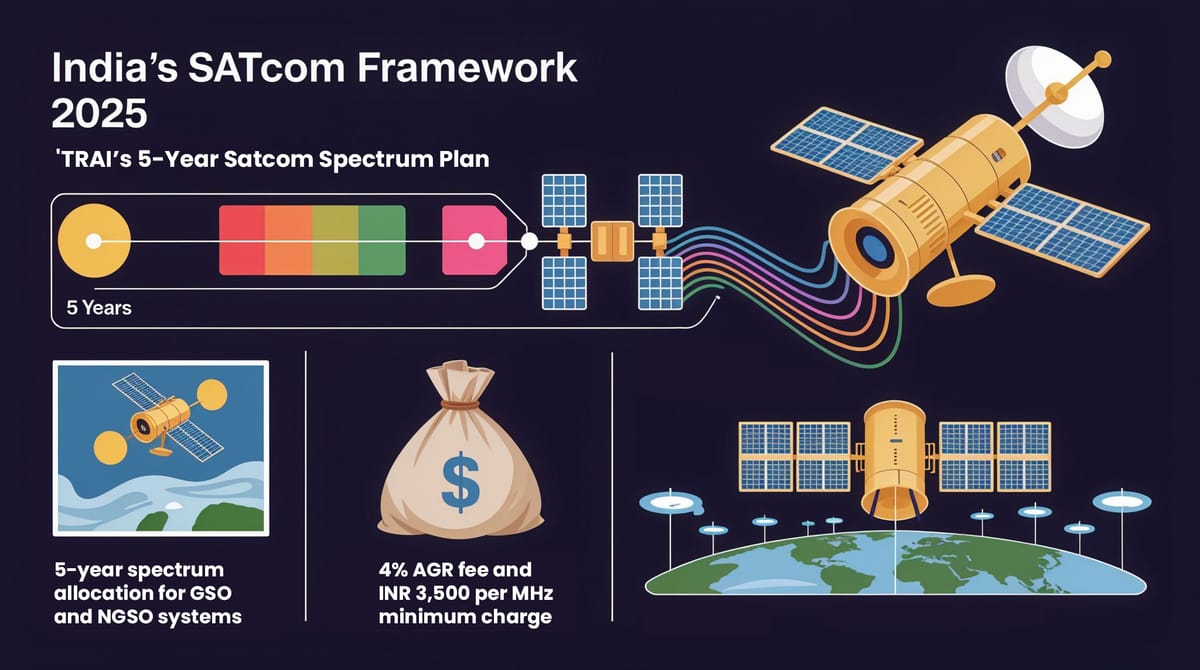Spectrum Revolution: TRAI's Bold Move for a Digitally Connected India
The recent move by the Telecom Regulatory Authority of India (TRAI) to propose for 5 years of spectrum allocation is a significant step towards the improvement of the digital infrastructure of the country. The spectrum allocation is also to include a provision that gives a user the right to extend the first five-year period of use, by another 2 years.
Prominent Points of TRAI's Recommendations:
- Administrative Allocation: Utilizing the administrative route for allocation will have multiple advantages. It will boost the availability of the spectrum by avoiding the delay, which is usual in the auction process that normally takes a long time. This would support the satellite service deliverers to wrap up the internet connecting system business as soon as possible.
- Usage Fee: It has been proposed to charge an spectrum usage fee of 4% of the operator's AGR with a floor price of ₹3,500 per MHz per year. The same will still require a license, regardless of whether or not the licensee is charging a fee for the services rendered.
- Urban Subscriber Levy: Collection of an urban subscriber levy is another way in which the spectrum of mobile broadband can be allocated a value. For non-geostationary orbit-based (NGSO) FSS residing in urban and metropolitan areas, an additional levy of ₹500 per urban subscriber per annum is proposed. Also, the policy exempts the rural and remote areas.
- Infrastructure Deployment: It is absolutely mandatory for the service provider that in not later than 12 months after it gets the desired ok from DOT (Department of Telecommunication) for setting up the earth station gateway, it should have accomplished the infrastructure networking.
Business Perspective:
It is strongly believed that the implementation of these conditions will make inroads into the spread of satellite-based Internet services in the hitherto less connected and remote parts of India. TRAI is now scouting the global landscape for likeminded investors who can help in the expansion of satellite-delivered Internet in India without any hurdles. This may bring in healthy change with a higher number of players and technology-based breakthroughs in the satellite communication world.
The plan has faced opposition from local telecom providers including Reliance Jio and Bharti Airtel who believe that the allocation through the bureaucracy as well as the envisaged costs could be detrimental and may interfere with the satellite and land-based service providers' equal conditions of competition.
Triumphant Speak:
The approach to satcom spectrum allocation adopted by TRAI as a step towards the future is a move in the right direction and will undoubtedly help bridge the digital divide in India.
The promotion of satellite connectivity will also enable remote areas with the potential of enjoying fast internet thus confirming with the government’s plan of making India an equitable digital nation.









Member discussion